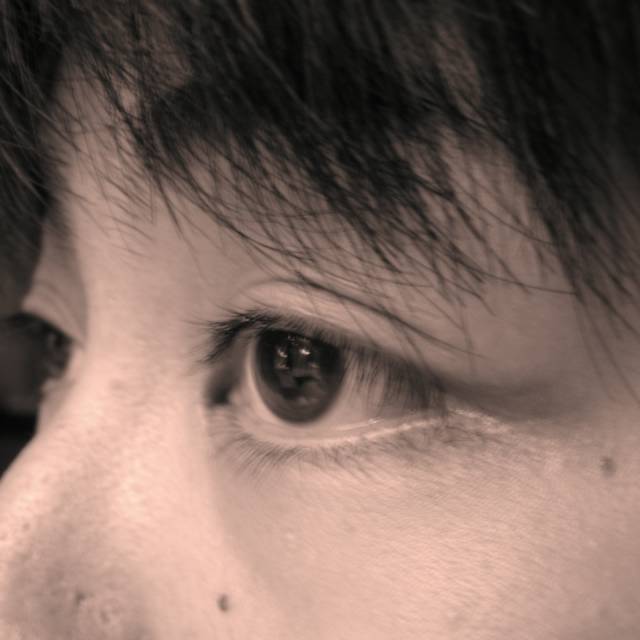exposed but enshrined: on the presentation of embryonic specimens in the Body Worlds
As I wrote in the previous post, I wasn't disturbed by the Body Worlds exhibit, despite my anticipation. Except for their treatment of the embryos, that is.
General concensus (and the way they advertise the exhibit as well) is that it is an exhibition of human bodies, skinned, disected, colored, and plasticized with amazing technology, to show the construction of our bodies. And it is generally true; adult bodies were skinned, disected, sliced, (some even had their tissues melted away to show the quite amazing network of blood vessels,) and put into various funny poses, which some might find offensive.
The exception was with the fetuses and embryos. Of about two dozen specimens, only one was NOT in the whole. It was a slice of an embryo in a transparent plastic cube. Its pose was the familiar fetus position. It was dyed in fleshy red, which was also an anomaly; all the other, sliced adult bodies in transparent plastic were dyed in browns, greens, yellows--colors reminiscent of minerals, not flesh. Other embrionic specimens were all in their entirety, all in the familiar fetus position. Not even one of them was skinned to show the "inside." Except for to show their development in terms of size, there was no apparent scientific reason to display so many fetuses and embryos in their entirety. And this, is totally strange within the context of the entire exhibit, which is to show the "inside" of our bodies.
Most of the specimens of the fetuses/embryos were segregaed in a small curtained section (which is probably out of consideration for those who might find this part too disturbing, due to their moral, religious, or political inclinations). In this small shrine, literally cradled in special white satin cloth (the luxurious delicacy of which all the adult specimens weren't entitled to enjoy), looking like "real" babies in dead gray skin, the specimens were far more disturbing (to me) than their adult conuterpart, which were forced into funny poses and overt display of muscles, nerves, and ligaments. The feeling of the "real" was preserved with the embryonic specimens. The feeling of violating the sanctity of human bodies was carefully preserved, or even created, through the strange juxtaposition of exposure (the embryos are out to be seen) and concealment (and yet their skins are intact, and they're enshrined in a little corner).
Furthermore, a sort of classical, soft music was playing in that little section of the fetuses and embryos. Ever so subtle, but the effect was evident: more appeal to emotion. This is also something that didn't exist around the adult specimens. At this point, I have to wonder, what are they endorsing here? What are these subtle manipulations for? In the context of hysteric controversy over abortion in the U.S., it seems obvious. The embryos were displayed in such a way that appeal to our emotion, advocating their "helpless humanness" and thus the "murderousness" of abortion. To preserve their "humanness," and to disturb the viewers, the exhibit had to show the embryos undisected. To show their "inside" would have injured the sanctity of their humanness. In order to emphasize their helplessness, they had to be shown in their familiar fetal position, alluding to our common image of embryos protected in the "warmth of the mother's womb." And when they had to be disected, the bloodiness, fleshiness should be preserved, lest the spectators be desensitized (which is exactly what happened with the perfectly clean disected specimens of adults). And of course, the music.
I don't know anything about the political inclination of Gunther von Hagen, the creator of the plasticized bodies. But from what I saw at the Body Worlds exhibit, it seems pretty obvious that the exhibit is supposed to perform a public role in the debate of abortion, in support of one view that I'm afraid is becoming the majority. Aside from the political agenda, the "baby section" (which, I think, was given a euphemistic title that I can't remember) was interesting in its display of intricate interplay between the exposure and concealment, and how these two manipulations influence our perception of what is inherently disturbing, and, plainly put, gross.



0 Comments:
Post a Comment
<< Home